Kitchen Upgrade: 10 Must-Have Inclusions for a Butler's Pantry
Planning a butler's pantry? Get the most from the space with these smart features
As a nation, we’ve embraced the idea of open-plan living, where the kitchen blends seamlessly into living and dining areas. But what do you do when you’ve got guests hovering and dishes piling up in the sink? The answer is a butler’s pantry – a fantastically useful space off the kitchen where the grunt and grind of entertaining can take place. Run the dishwasher, have appliances on standby, and prep meals to your heart’s desire, while the part of your kitchen that’s on show remains pristine.
We’ve asked three experts to reveal the essential inclusions no hardworking butler’s pantry can be without.
We’ve asked three experts to reveal the essential inclusions no hardworking butler’s pantry can be without.
Before you start planning, think about what you’ll be storing and if there are any specialist solutions that will make items more accessible.
Wine, for example, will require purpose-designed racks or perhaps a wine fridge. Large platters, boards and trays do well on open shelving or vertical racks. For heavy items such as cookware, crockery sets and infrequently used appliances, Dan Kitchens designer Graeme Metcalf recommends wide, under-bench pull-out drawers.
Wine, for example, will require purpose-designed racks or perhaps a wine fridge. Large platters, boards and trays do well on open shelving or vertical racks. For heavy items such as cookware, crockery sets and infrequently used appliances, Dan Kitchens designer Graeme Metcalf recommends wide, under-bench pull-out drawers.
When it comes to food storage, Dominique McAdam, owner of Provincial Kitchens, says slimline open shelving – between 100 and 300 millimetres wide – installed above the benchtop allows you to see everything at a glance and prevents items getting lost behind each other.
Floor-to-ceiling storage will maximise the amount of space available. Put those items used infrequently up top and consider installing a ladder for access.
See more stunning kitchens
Floor-to-ceiling storage will maximise the amount of space available. Put those items used infrequently up top and consider installing a ladder for access.
See more stunning kitchens
The big question is whether cupboard doors are required in the butler’s pantry. Technically, the entire space is a cupboard so the experts agree that doors are optional. Leaving them out will save a bit of money, keep everything visible and, if the pantry is narrow, improve circulation. However, Metcalf says some clients prefer the tidier appearance of closed cupboards. Doors will also keep dust out.
McAdam adds: “A combination of open and closed storage means you can put all your beautiful items on display, and put messy-looking things behind cupboard doors.”
McAdam adds: “A combination of open and closed storage means you can put all your beautiful items on display, and put messy-looking things behind cupboard doors.”
2. Bench space
The second function of a butler’s pantry is food prep, which means bench space is essential. It’s also important when entertaining, says Metcalf, as the pantry bench is where you’ll set up platters of food, and stash dirty dishes as the party progresses.
McAdam says including functional bench space will affect the amount of floor space required for the pantry: “Try and make the pantry big enough that you can at least have a 600-millimetre-deep bench. So, depth-wise you need the pantry to be at least 1500 millimetres so you’ve got somewhere to stand.”
Tip: Bagnato says a compact pantry tends to be the most user-friendly: “A narrow butler’s pantry may work better than a large one, because all you need to do is twist your body to grab everything.”
The second function of a butler’s pantry is food prep, which means bench space is essential. It’s also important when entertaining, says Metcalf, as the pantry bench is where you’ll set up platters of food, and stash dirty dishes as the party progresses.
McAdam says including functional bench space will affect the amount of floor space required for the pantry: “Try and make the pantry big enough that you can at least have a 600-millimetre-deep bench. So, depth-wise you need the pantry to be at least 1500 millimetres so you’ve got somewhere to stand.”
Tip: Bagnato says a compact pantry tends to be the most user-friendly: “A narrow butler’s pantry may work better than a large one, because all you need to do is twist your body to grab everything.”
3. Power points
All that lovely bench space means you can leave your cooking appliances out on display, which means you’ll need power points – and lots of them. “Often people don’t really think about including lots of power points,” says Metcalf. “But … you might put double the amount in the butler’s pantry than you would have in a normal kitchen.” This means all your appliances can be left plugged in and ready to go at all times.
The Places People Forget to Install Power Points
All that lovely bench space means you can leave your cooking appliances out on display, which means you’ll need power points – and lots of them. “Often people don’t really think about including lots of power points,” says Metcalf. “But … you might put double the amount in the butler’s pantry than you would have in a normal kitchen.” This means all your appliances can be left plugged in and ready to go at all times.
The Places People Forget to Install Power Points
4. Durable materials
Durability is the most important factor when selecting benchtop and cabinetry materials for a butler’s pantry, say our experts.
“Butler’s pantries tend to be high work zones,” says Metcalf. “Select low-maintenance materials for benchtops that are going to take knocks and will resist staining and scratching. This goes for cupboard fronts too.”
Practical materials to consider include stainless steel, hard-wearing laminates and engineered stone.
Durability is the most important factor when selecting benchtop and cabinetry materials for a butler’s pantry, say our experts.
“Butler’s pantries tend to be high work zones,” says Metcalf. “Select low-maintenance materials for benchtops that are going to take knocks and will resist staining and scratching. This goes for cupboard fronts too.”
Practical materials to consider include stainless steel, hard-wearing laminates and engineered stone.
The cabinet and benchtop finishes in a butler’s pantry don’t necessarily have to match those in the main kitchen. “Most of the butler’s pantries we do are made of cheaper but very durable materials,” says Metcalf. “That’s because they’re not showpiece kitchens – they’re concealed places where you’re going to be doing most of the work.”
Tip: The butler’s pantry isn’t the place for high-maintenance natural stone benchtops. But you can replicate the luxe look with ultra-compact, large-format porcelain (try brands including Dekton, Neolith and Maximum). These hard-wearing surfaces are heat-, stain- and impact-resistant, and can mimic all sorts of natural materials.
Tip: The butler’s pantry isn’t the place for high-maintenance natural stone benchtops. But you can replicate the luxe look with ultra-compact, large-format porcelain (try brands including Dekton, Neolith and Maximum). These hard-wearing surfaces are heat-, stain- and impact-resistant, and can mimic all sorts of natural materials.
5. Sink and tap
A sink and tap will up the functionality factor ten-fold in your butler’s pantry. A sink means you can fill the kettle or coffee machine, wash appliances, prepare food, and rinse and wash plates while entertaining.
“Go for a deeper sink and pair it with a pull-out tap, like you’d have in a commercial kitchen,” says Metcalf.
A sink and tap will up the functionality factor ten-fold in your butler’s pantry. A sink means you can fill the kettle or coffee machine, wash appliances, prepare food, and rinse and wash plates while entertaining.
“Go for a deeper sink and pair it with a pull-out tap, like you’d have in a commercial kitchen,” says Metcalf.
6. Dishwasher
Adding a separate dishwasher to your butler’s pantry makes practical sense, as it means you don’t have to transfer butler’s pantry items out to the kitchen to wash them, says Bagnato.
McAdam adds: “When I design a butler’s pantry, I try to give my clients everything they will need if they want to cook in there. Including a dish-drawer dishwasher or a small dishwasher means that whatever they’re using in there can be washed up in there too”.
Adding a separate dishwasher to your butler’s pantry makes practical sense, as it means you don’t have to transfer butler’s pantry items out to the kitchen to wash them, says Bagnato.
McAdam adds: “When I design a butler’s pantry, I try to give my clients everything they will need if they want to cook in there. Including a dish-drawer dishwasher or a small dishwasher means that whatever they’re using in there can be washed up in there too”.
7. Fridge and freezer
Fridge space is always in high demand, which makes a second fridge one of the most useful inclusions you can have in a butler’s pantry. “You can never have enough refrigerator space these days. A second refrigerator for drinks will free up space in your main fridge,” says Bagnato. “Many home owners store this second fridge in the garage, but it’s not practical to have to make a trip to the garage.”
To preserve bench space, McAdam suggests installing an under-bench fridge or a freezer drawers.
Fridge space is always in high demand, which makes a second fridge one of the most useful inclusions you can have in a butler’s pantry. “You can never have enough refrigerator space these days. A second refrigerator for drinks will free up space in your main fridge,” says Bagnato. “Many home owners store this second fridge in the garage, but it’s not practical to have to make a trip to the garage.”
To preserve bench space, McAdam suggests installing an under-bench fridge or a freezer drawers.
If you only have the space or budget for a single fridge, another design strategy is to install it at the transition point between the main kitchen and the butler’s pantry so it’s easily accessible from both areas.
8. Cooking appliances
While it can be costly to start doubling up on big-ticket items such as the oven, the butler’s pantry is certainly the perfect place for the microwave, where it can be installed at the most practical height without worrying about aesthetics, as you would in the main kitchen.
While it can be costly to start doubling up on big-ticket items such as the oven, the butler’s pantry is certainly the perfect place for the microwave, where it can be installed at the most practical height without worrying about aesthetics, as you would in the main kitchen.
McAdam says she often includes a single Pitt Burner hotplate in the pantry, just to add flexibility and convenience for quick tasks: “You don’t need a whole cooktop in there; the Pitt Burner works well as it is an individual hot plate that can be set straight into the benchtop.”
Metcalf warns that installation costs can quickly escalate when you introduce cooking appliances to the butler’s pantry. “If you have a cooktop you will then need to install an extraction range hood to remove cooking fumes and steam. This is even more important in an enclosed space such as the butler’s pantry than a in a larger kitchen.”
Metcalf warns that installation costs can quickly escalate when you introduce cooking appliances to the butler’s pantry. “If you have a cooktop you will then need to install an extraction range hood to remove cooking fumes and steam. This is even more important in an enclosed space such as the butler’s pantry than a in a larger kitchen.”
9. Light
Well-designed task lighting is essential in a butler’s pantry, says Bagnato. “Look at what you’ll be doing in the butler’s pantry; you’ll need lighting that’s appropriate,” says Metcalf. A combination of ceiling lights, LED strips installed under overhead shelves, and in-cupboard lights will mean that every corner of your butler’s pantry is properly illuminated.
The lighting should also be flexible, he adds. For example, if you’re making a cup of tea late at night, “you don’t want to hit one switch and every single light goes on – you want the option to turn on some softer lighting”.
How Do I… Choose Kitchen Lighting?
Well-designed task lighting is essential in a butler’s pantry, says Bagnato. “Look at what you’ll be doing in the butler’s pantry; you’ll need lighting that’s appropriate,” says Metcalf. A combination of ceiling lights, LED strips installed under overhead shelves, and in-cupboard lights will mean that every corner of your butler’s pantry is properly illuminated.
The lighting should also be flexible, he adds. For example, if you’re making a cup of tea late at night, “you don’t want to hit one switch and every single light goes on – you want the option to turn on some softer lighting”.
How Do I… Choose Kitchen Lighting?
10. Privacy
Butler’s pantries are utilitarian spaces – somewhere to get stuck into food prep without worrying about mess. “If the butler’s pantry is very open to the rest of the kitchen, this compromises its functionality,” says Metcalf. “Then you have to start making decisions about making the butler’s pantry look more uniform with the rest of the kitchen.” Not to mention worrying about keeping it looking tidy.
A sliding door is the best way to conceal the inner workings of your butler’s pantry, he says. A hinged door can get in the way and create obstructions, but a door that glides back into a pocket in the wall looks neat and allows you to have the entryway open or closed.
Butler’s pantries are utilitarian spaces – somewhere to get stuck into food prep without worrying about mess. “If the butler’s pantry is very open to the rest of the kitchen, this compromises its functionality,” says Metcalf. “Then you have to start making decisions about making the butler’s pantry look more uniform with the rest of the kitchen.” Not to mention worrying about keeping it looking tidy.
A sliding door is the best way to conceal the inner workings of your butler’s pantry, he says. A hinged door can get in the way and create obstructions, but a door that glides back into a pocket in the wall looks neat and allows you to have the entryway open or closed.
Another way to create privacy for the butler’s pantry is to construct a full-height false wall of cabinetry, and tuck the pantry behind it, as pictured here. Create an entryway and the depth of the cabinets blocks any clear view of the pantry’s interior – no doors required. Another idea is to create a walk-through pantry behind the cabinetry, with openings at either side.
Tip: When planning where to position your butler’s pantry, remember that access to the kitchen is paramount. “It must be adjacent to the kitchen and not across the room,” says Bagnato.
Tip: When planning where to position your butler’s pantry, remember that access to the kitchen is paramount. “It must be adjacent to the kitchen and not across the room,” says Bagnato.
Tell us
Is a butler’s pantry on your wish list or have you recently put one in? Tell us about it in the Comments section. And if you enjoyed this story, like it, save the photos and join the conversation.
More
Find a kitchen renovator or designer to help you create a butler’s pantry for your home
Is a butler’s pantry on your wish list or have you recently put one in? Tell us about it in the Comments section. And if you enjoyed this story, like it, save the photos and join the conversation.
More
Find a kitchen renovator or designer to help you create a butler’s pantry for your home



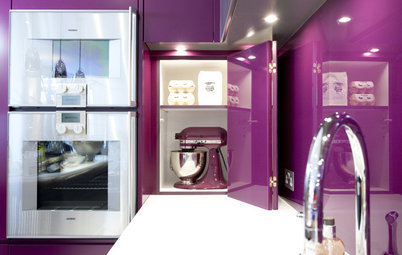
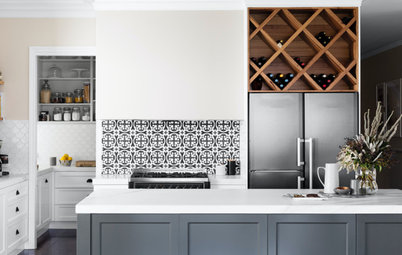
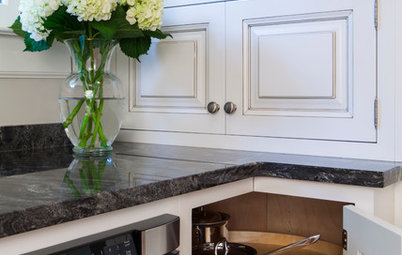
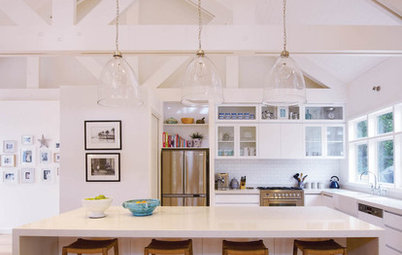
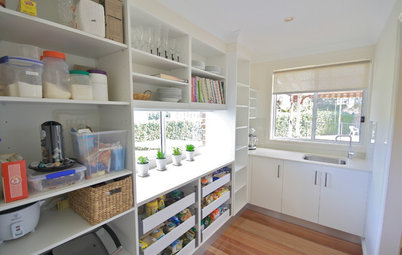
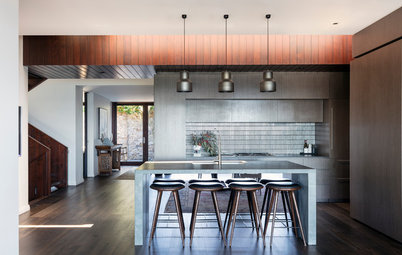
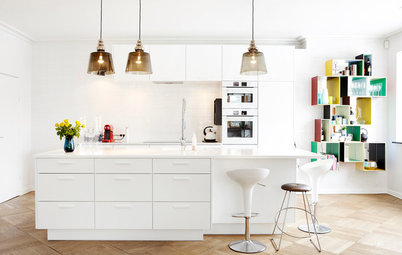
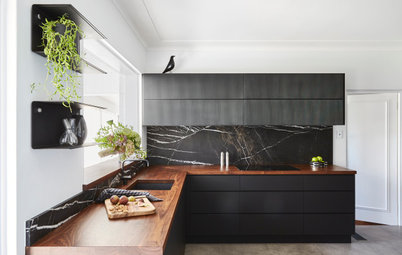
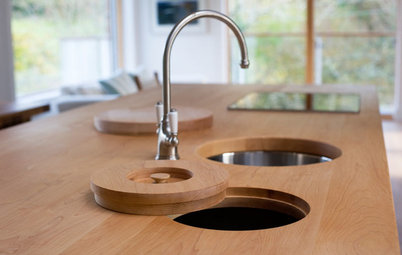
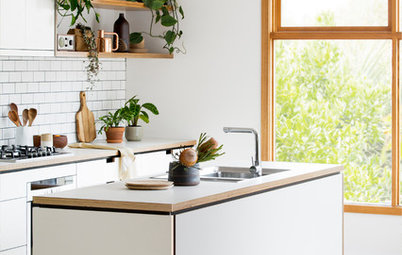
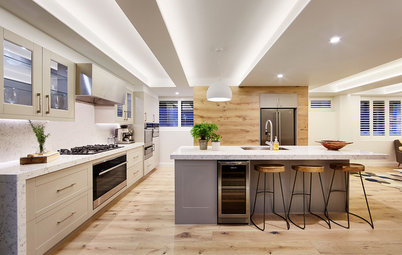
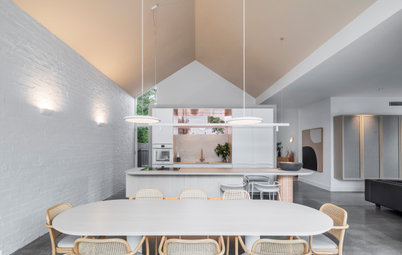
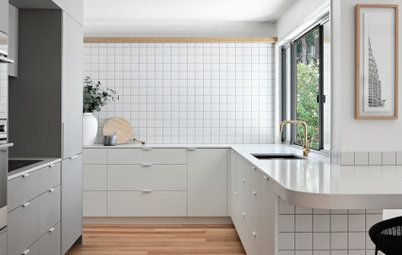
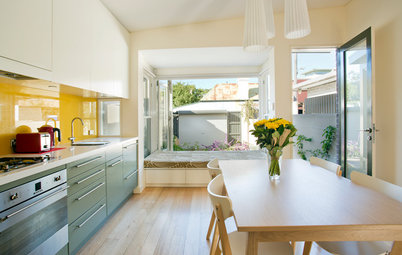
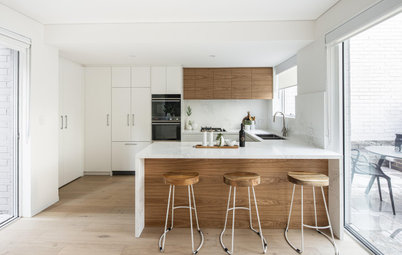
A butler’s pantry isn’t just a spot to store food, but appliances, oversize platters, cookware, vases, your ‘good’ glasses – all those tricky items there’s never quite enough room for in the main kitchen.
“The most important consideration when designing a butler’s pantry is storage and… easy access to stored items. Opt for open-plan shelves and have an abundance of them,” advises architect Dominic Bagnato of Bagnato Architects.